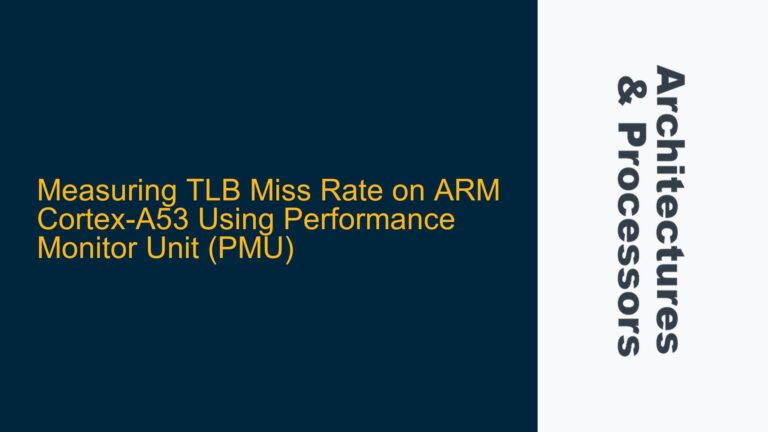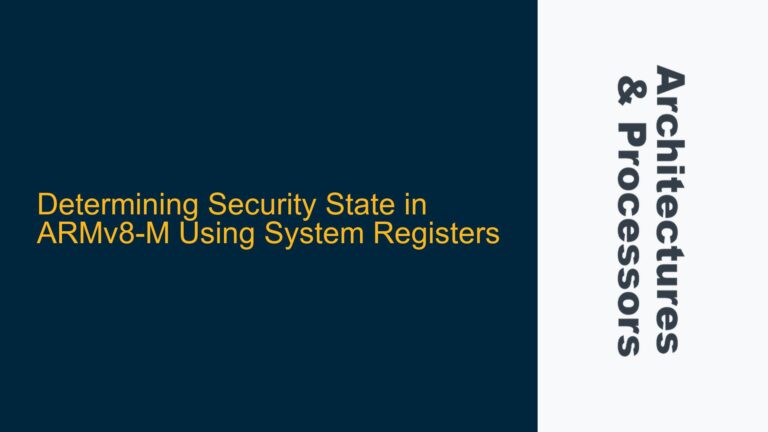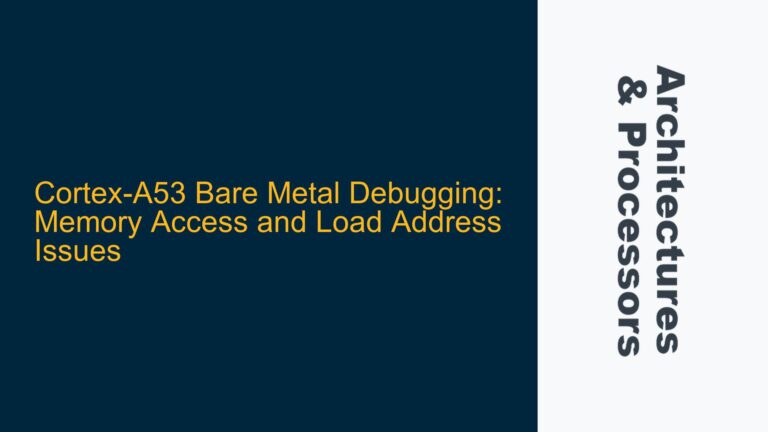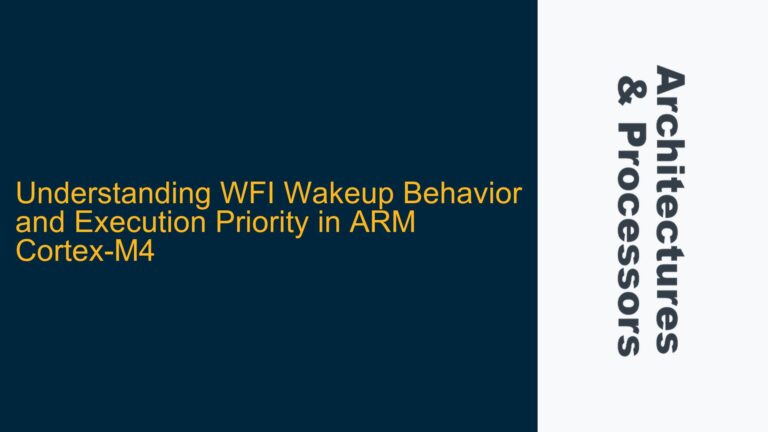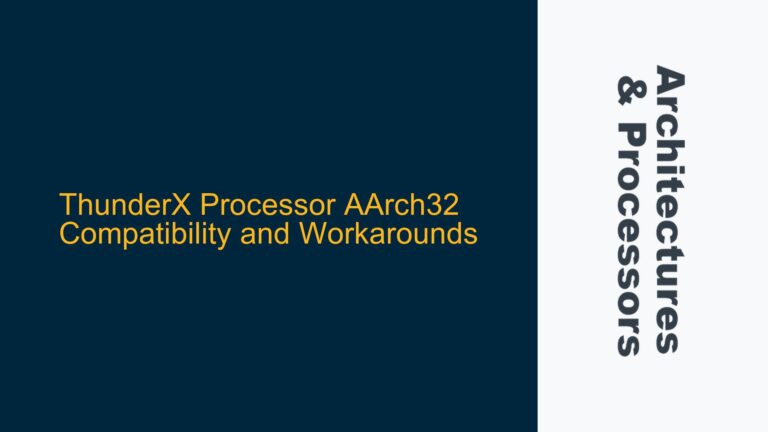ARM Cortex-A72 DAIF Register Operation Overhead
The ARM Cortex-A72 processor, part of the ARMv8-A architecture, exhibits significantly higher latency when performing operations on the DAIF (Debug, Abort, Interrupt, and Fast interrupt) register compared to the Cortex-A53. The DAIF register is critical for managing interrupt handling and system state, and its operations are fundamental to low-level system control. On the Cortex-A72, operations such as unconditionally disabling interrupts (msr daifset, #3), enabling interrupts (msr daifclr, #3), reading flags (mrs reg, daif), and writing flags (msr daif, reg) are measured to be orders of magnitude slower than on the Cortex-A53. For example, disabling interrupts takes approximately 20 nanoseconds on the Cortex-A72 but only 0.63 nanoseconds on the Cortex-A53. This discrepancy arises from the architectural differences between the two cores, with the Cortex-A72 prioritizing high-performance out-of-order execution and deeper pipelines, which introduce additional overhead for certain types of register operations.
The Cortex-A72 is designed for high-performance applications, featuring a more complex microarchitecture with advanced branch prediction, speculative execution, and deeper pipelines. While these features enhance performance for compute-intensive workloads, they can introduce latency for operations that require precise state management, such as DAIF register access. In contrast, the Cortex-A53, being an in-order processor optimized for power efficiency, handles these operations with minimal overhead. This divergence in design philosophy explains the observed performance gap but also highlights the need for targeted optimizations when working with the Cortex-A72.
Microarchitectural Differences and Interrupt Handling Overhead
The primary cause of the high latency in DAIF register operations on the Cortex-A72 stems from its microarchitectural complexity. The Cortex-A72 employs a sophisticated pipeline structure with multiple stages, out-of-order execution, and advanced speculative mechanisms. While these features improve throughput for general-purpose workloads, they introduce additional steps for operations that require precise synchronization, such as modifying the DAIF register. For instance, when executing msr daifset, #3 to disable interrupts, the processor must ensure that all pending instructions are completed or flushed, and the pipeline is synchronized to reflect the new interrupt state. This synchronization process is inherently more time-consuming on the Cortex-A72 due to its deeper pipeline and out-of-order execution capabilities.
Another contributing factor is the Cortex-A72’s cache and memory subsystem. The Cortex-A72 features a more complex cache hierarchy designed to support high-bandwidth data access, which can introduce additional latency for register operations that require cache coherency or memory barrier enforcement. In contrast, the Cortex-A53’s simpler cache structure and in-order execution model allow it to handle DAIF operations with minimal overhead. Additionally, the Cortex-A72’s focus on performance over power efficiency means that certain low-level operations, such as DAIF register access, may not be as optimized as they are on the Cortex-A53.
The Cortex-A72’s interrupt handling mechanism also plays a role in the observed latency. The processor’s advanced interrupt controller and prioritization logic add complexity to the process of enabling or disabling interrupts. When executing msr daifclr, #3 to enable interrupts, the Cortex-A72 must evaluate the interrupt state, update the DAIF register, and ensure that the pipeline is ready to handle incoming interrupts. This process involves multiple stages of validation and synchronization, which contribute to the higher latency compared to the Cortex-A53.
Optimizing DAIF Register Operations on Cortex-A72
To mitigate the high latency of DAIF register operations on the Cortex-A72, developers can employ several optimization strategies. These strategies focus on reducing the frequency and duration of DAIF operations, leveraging conditional execution, and tailoring code to the Cortex-A72’s microarchitecture.
First, optimizing interrupt handling is crucial. By minimizing the frequency of interrupt enable/disable operations, developers can reduce the overall impact of DAIF-related latency. This can be achieved by restructuring code to use interrupt masking or prioritization mechanisms, allowing critical sections to execute without frequent toggling of the interrupt state. For example, instead of disabling interrupts globally, developers can selectively mask specific interrupt sources using the processor’s interrupt controller.
Second, conditional register operations can be used to reduce unnecessary DAIF modifications. Instead of unconditionally enabling or disabling interrupts, developers can use conditional logic to perform these operations only when necessary. For instance, if a code segment only requires interrupts to be disabled under specific conditions, a conditional branch can be used to skip the msr daifset, #3 instruction when not needed. This approach reduces the number of DAIF operations and minimizes their impact on performance.
Third, limiting access to the DAIF register can help reduce latency. Developers should carefully analyze their code to ensure that DAIF operations are only performed when absolutely necessary. For example, reading the DAIF flags (mrs reg, daif) should be avoided unless the current interrupt state is explicitly required for decision-making. Similarly, writing to the DAIF register (msr daif, reg) should be minimized by consolidating flag updates and avoiding redundant operations.
Fourth, leveraging compiler optimizations can help reduce the overhead of DAIF operations. Modern compilers often include architecture-specific optimizations that can improve the efficiency of low-level operations. Developers should ensure that they are using the latest version of their compiler and enabling appropriate optimization flags. For example, the -O3 optimization level can enable advanced instruction scheduling and register allocation techniques that reduce the latency of DAIF operations.
Finally, tailoring code to the Cortex-A72’s microarchitecture can yield significant performance improvements. Developers should consider the Cortex-A72’s pipeline structure, cache hierarchy, and interrupt handling mechanisms when designing their software. For example, aligning critical sections of code with the Cortex-A72’s pipeline stages can reduce the overhead of DAIF operations. Additionally, using prefetching and cache management techniques can minimize the impact of DAIF-related latency on overall system performance.
By implementing these strategies, developers can narrow the performance gap between the Cortex-A72 and Cortex-A53 for DAIF register operations. While the Cortex-A72’s microarchitectural complexity will always introduce some overhead, targeted optimizations can help mitigate its impact and ensure efficient system operation.

